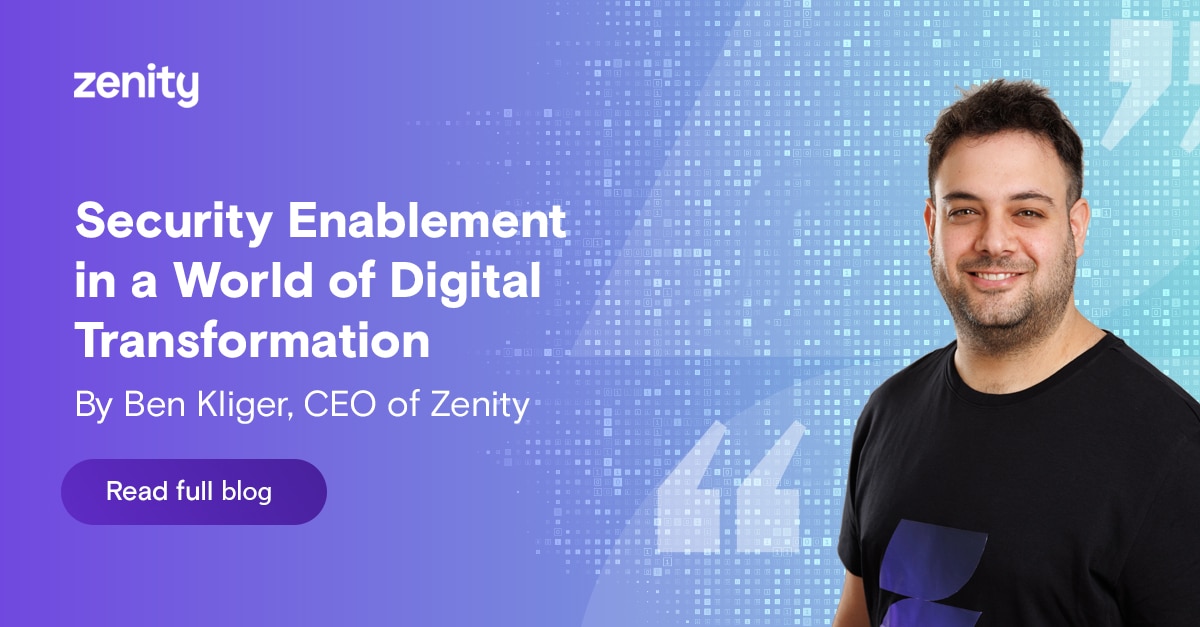Security Enablement in a World of Digital Transformation

39% of organizations already use low-code and another 27% plan to start doing so in the next year (Forrester). By 2025 more than 70% of all application development will be done using no-code/low-code (LCNC), according to Gartner. LCNC is already everywhere – so what does that mean for your business?
The No-Code/Low-Code Revolution
LCNC empowers professionals to make the tools and services that they need to streamline their work, automate repetitive tasks, and become more impactful, at greater scale, across their departments and organizations. That makes companies more agile, innovative and efficient.
You no longer need to be a software engineer to create a program, an integration, or an app. LCNC empowers meaningful digital transformation at every level of an organization.
At the same time, LCNC comes with risks. It means that people who aren’t knowledgeable about security and compliance issues – but do have access to highly sensitive data – have the potential to create serious weaknesses in your company’s technical infrastructure. The Microsoft Power Platform DLP bypasses that we disclosed recently are great examples. The platform is secure. What people choose to do with it? Not necessarily.
Unfortunately, security and IT professionals are often left stranded without the proper tooling or oversight to understand what employees are doing with LCNC, and the risks they might be creating. And what they can’t see, they can’t fix.
Security Needs to Say “Yes”
As my co-founder Michael pointed out in one of his Dark Reading articles, it’s significant that Forrester recently predicted that 2023 will see a large enterprise suffering a major security breach rooted in business users using LCNC. This risk is real and immediate.
LCNC is truly an example of a case where a risk is really an opportunity in disguise. Security professionals who embrace LCNC and find ways to guide their organizations, and the employees within them, to use LCNC safely will not only protect the business from harm but also contribute to a vital aspect of the digital transformation process.
Employees are already using LCNC, and that genie is not going to go back into the bottle. Major SaaS companies like Microsoft, Salesforce, ServiceNow, and SAP embed and promote LCNC, making it part of how employees engage with business-critical processes and data.
Security teams need to get ahead of this trend and create processes, oversight and education to ensure that at their company, LCNC is a safe and compliant evolution. And that’s why I’m so excited about Zenity, and the ways we can help security teams to interact positively with LCNC while making it safe for their companies.
Zenity: Empowering Both Innovation and Security
Zenity empowers companies to unleash and promote citizen development in a secure and compliant way, so that they can leverage its advantages while mitigating the risks.
With Zenity, security teams can gain transparency into LCNC with an updated cross-platform inventory of all no-code/low-code components so that they know what’s being developed, by whom, and how it’s being used. With continuous risk assessment, they can see the impact of LCNC developments, and have risky applications and automations flagged right away before they become a danger, and with 1-click fixes fast remediation is also available.
Security teams can also set guidelines and guardrails for how LCNC can be employed, distinguish between playground, development and production environments, and use automated actions to actively ensure compliance and enforce policies.
Instead of security teams scrambling in the dark to protect their company against LCNC risks they don’t have visibility into, Zenity helps security teams and IT professionals to eliminate risk without disrupting the business. Security can both prevent risks from LCNC and empower citizen development and all the benefits it brings.
It’s technology democratization, digital transformation and cybersecurity – all in one.



